28.
AMERICAN INDIAN BASKET WEAVES1
ByOTIST.MASONn/an/an/an/a
As you gaze on the Indian basket maker at work, herself frequently unkempt, her garments the coarsest, her house and surroundings suggestive of anything but beauty, you are amazed. You look about you, as in a cabinet shop or atelier, for models, drawings, patterns, pretty bits of color effect. There are none. . . . Her tools are more disappointing still, for of these there are few—a rude knife, a pointed bone, that is all. Her
modeling block is herself. Her plastic body is the repository of forms. Over her knee she molds depressions in her ware, and her lap is equal to all emergencies for convex effects. She herself is the Vishnu of her art, the creator of forms. . . .
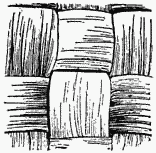 Fig. 1. Coarse checkerwork.
Fig. 1. Coarse checkerwork.
In all types of weave the working strands are constantly dampened by dipping the fingers into a basket or cup of water close at hand, or, in the case of embroidery, by drawing the section of grass stem through the lips. . . .
The various processes of manufacture will now be definitely explained. In technic, basketry is either hand-woven or sewed. The hand-woven basketry is further divisible into (A) Checkerwork, (B) Twilledwork, (C) Wickerwork, (D) Wrappedwork, and (E) Twinedwork, in several varieties. The sewed work goes by the name of coiled basketry, and is classed both by the foundation and the fastening. In addition to these technical methods on the body, special ones are to be found in the border.
WOVEN BASKETRY
A. Checkerwork.—This occurs especially in the bottoms of many North Pacific coast examples, and also in the work of eastern Canadian tribes (Fig. 1); in matting its use is well nigh universal.
In this ware the warp and the weft have the same thickness and pliability. It is impossible, therefore, in looking at the bottoms of the cedar-bark baskets and the matting of British Columbia (Fig. 2) or Eastern Canada to tell which is warp and which is weft. In very many examples the warp and weft of a checker bottom are turned up at right angles to form the warp of the sides, which may be wicker or twined
work. . . . When warp and weft are fine yarn or threads the result is the simplest form of cloth in cotton, linen, piña fiber, or wool. The cheap fabrics of commerce are of this species of weaving. In art and industry lattice-work frequently shows the bars intertwined as in checker basketry. . . .
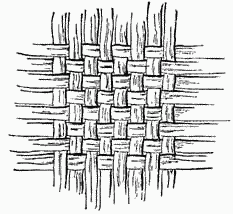 Fig. 2. Fine checkerwork.
Fig. 2. Fine checkerwork.
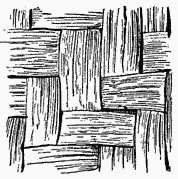 Fig. 3. Twilled work.
Fig. 3. Twilled work.
B. Twilledwork.—This is seen especially in those parts of the world where cane abounds. In America it is quite common in British Columbia, Washington, Southern United States, Mexico, and Central America, and of excellent workmanship in Peru, Guiana, and Ecuador. The fundamental technic of diagonal basketry is in passing each element of the weft over two or more warp elements, thus producing either diagonal or twilled, or, in the best samples, an endless variety of diaper patterns. . . . (See Fig. 3).
Twill, or tweel. A diagonal appearance given to a fabric by causing the weft threads to pass over one warp thread, and then under two, and
so on, instead of taking the warp threads in regular succession, one down, one up. The next weft thread takes a set oblique to the former, throwing up one of the two deposed by the preceding. In some twills it is one in three, or one in four. The Latin trilix, a certain pattern in weaving, became drillich in German, and hence our word drill. Twill is derived from
zwillich, which answers to the Latin bilix, and the Greek dimitos. The latter survives in dimity. See also samite, derived from Greek hexamiton, six thread.
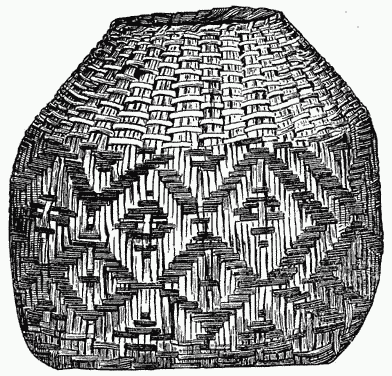 Fig. 4. Twilled weaving. Cherokee Indians, North Carolina.
Fig. 4. Twilled weaving. Cherokee Indians, North Carolina.
The French touaille has also been suggested as the etymological source of the word.
The fabrics thus woven are very numerous—satin, blanket, merino, bombazine, kerseymere, etc. When the threads cross each alternately in regular order it is called plain weaving; but in twill the same thread of weft is flushed, or separated from the warp while passing over a number of warp threads, and then passes under a warp thread.
The points where the threads of the warp cross form diagonal lines, parallel to each other, across the face of the cloth. In blanket twill every third thread is crossed. In some fabrics 4, 5, 6, 7, or 8 threads are crossed. In full satin twill there is an interval of 15 threads, the warp (organzine silk) being floated over 15 threads of the woof (tram), giving the glossy appearance. . . .
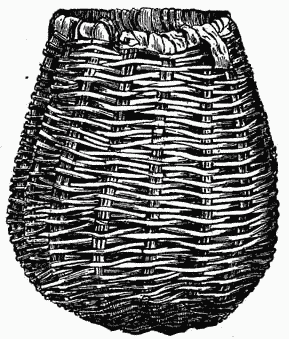 Fig. 5. Wicker basket. Zuñi, New Mexico.
Fig. 5. Wicker basket. Zuñi, New Mexico.
Excellent variety was also produced in this kind of weaving by means of color. Almost any textile plant when split has two colors, that of the outer, or bark surface, and that of the interior woody surface or pith. Also the different plants used in diagonal basketry have great variety of color. By the skillful manipulation of the two sides of a splint, by using plants of different species, or with dyed elements, geometric patterns, frets, labyrinths, and other designs in straight line are possible. (See Fig. 4.) . . .
C. Wickerwork.—The name is from the Anglo-Saxon wican, to bend. Common in Eastern Canada, it is little known on the Pacific coast and in the Interior Basin, excepting in one or two pueblos, but is seen abundantly
in Southern Mexico and Central America. It consists of a wide or a thick and inflexible warp and a slender flexible weft (Fig. 5). The weaving is plain and differs from checkerwork only in the fact that one of the elements is rigid. The effect on the surface is a series of ridges. It is possible also to produce diagonal effects in this type of weaving.
Wickerwork must have been a very early and primitive form of textile. Weirs for stopping fish are made of brush, and wattled fences for game drives are set up in the same manner. A great deal of the coarse basketry
in use for packing and transporting is made in this fashion. The Zuñi Indians make gathering baskets of little twigs after the same technic, the inflexible warp being made up of a small number of twigs of the same plant, laid side by side. The transition from checker to wicker in some examples is easy. The moment one element, either warp or weft, is a little more rigid than the other, the intersections would naturally assume a wicker form. . . .
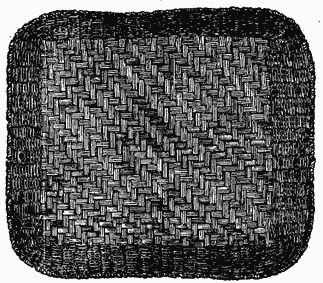 Fig. 6. Twilled and wicker mat. Hopi Indians, Arizona.
Fig. 6. Twilled and wicker mat. Hopi Indians, Arizona.
Wickerwork has pleasing effects combined with diagonal and other work. Fig. 6 is a square Hopi plaque, having twilled weaving in the middle and a band of wicker outside of this, the whole finished with rough, coiled sewing on the border.
It has passed into modern industry through the cultivation of osiers, rattan, and such plants for market baskets, covers for glass bottles, and in ribbed cloth, wherein a flexible weft is worked on a rigid warp. Also, good examples are now produced by the Algonkin tribes of New England and Eastern Canada. . . .
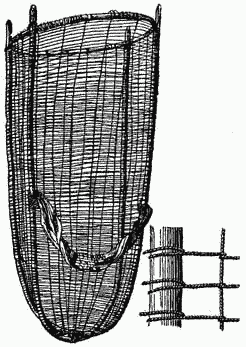 Fig. 7. Wrapped weaving, Mohave Indians, Arizona.
Fig. 7. Wrapped weaving, Mohave Indians, Arizona.
D. Wrappedwork.—Wrapped basketry consists of flexible or rigid warp and flexible weft. Examples of this technic are to be seen in America at the present time among the Indians of Southern Arizona for their carrying frames. (See Fig. 7.)
The warp extends from the rigid hoop, which forms the top, to the bottom where the elements are made fast. Firmness is given to the structure by means of two bowed rods crossing at right angles at the bottom and securely lashed at the top. The weft, usually of twine, is attached to one of the corner or frame pieces at the bottom and is wrapped once around each warp element. This process continues in a coil
until the top of the basket is reached. In some of its features this method resembles coiled work, but as a regular warp is employed and no needle is used in the coiling, it belongs more to the woven series. Hudson mentions the same among the Pomos for holding roof poles in place. The wrapping is very close where the rafters come to a point. As they widen the weft comes to be farther apart, being quite open on the outer margin. This method of weaving was employed by the Mound Builders of the Mississippi Yalley. Markings of wrapped weaving pressed on ancient pottery taken from a mound in Ohio are to be seen in the Third Report of the Bureau of Ethnology. (See Fig. 8.)
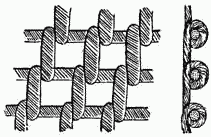 Fig. 8. Wrapped weaving, from mound in Ohio.
Fig. 8. Wrapped weaving, from mound in Ohio.
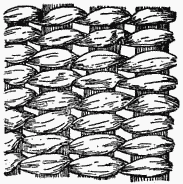 Fig. 9. Plain twined weaving.
Fig. 9. Plain twined weaving.
This style of weaving had not a wide distribution in America and is used at the present day in a restricted region. When the warp and the weft are of the same twine or material and the decussations are drawn tight, the joint resembles the first half of a square knot. The Mincopies of the Andaman Islands construct a carrying basket in the same technic. Specimens of their work were collected and presented to the U. S. National Museum by Dr. W. L. Abbott. These baskets resemble most closely the Mohave specimens, only they are smaller and more attractive. The Mincopies and their neighbors far and near have the incomparable rattan for warp and weft, which combines the strength and flexibility of copper wire. The distribution of this wrapped weaving has not been studied. . . .
E. Twinedwork.—This is found in ancient mounds of the Mississippi Valley, in bagging of the Rocky Mountains, down the Pacific coast from the Island of Attu, the most westerly of the Aleutian chain, to the borders of Chile, and here and there in the Atlantic slope of South America. Indeed, it is found among savages throughout the world. It is the most elegant and intricate of all in the woven or plicated series. Twined work
has a set of warp rods or rigid elements as in wickerwork, but the weft elements are commonly administered in pairs, though in three-strand twining and in braid twining three weft elements are employed. In passing from warp to warp these elements are twisted in half-turns on each other so as to form a two-strand or three-strand twine or braid and usually so deftly as to keep the smooth, glossy side of the weft outward. . . .
According to the relation of the weft elements to one another and to
the warp, different structures in twined weaving result as follows:
1. Plain twined weaving over single warps.
2. Diagonal twined weaving or twill over two or more warps.
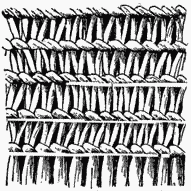 Fig.10. Twined openwork. Aleutian Islands.
Fig.10. Twined openwork. Aleutian Islands.
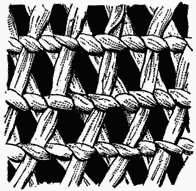 Fig. 11. Crossed warp, twined weave. Makah Indians, Washington.
Fig. 11. Crossed warp, twined weave. Makah Indians, Washington.
3. Wrapped twined weaving, or bird-cage twine, in which one weft element remains rigid and the other is wrapped about the crossings.
4. Lattice-twined weaving, tee or Hudson stitch, twined work around vertical warps crossed by horizontal warp element.
5. Three-strand twined weaving and braiding in several styles.
1. Plain twined weaving.—Plain twined weaving is a refined sort of wattling or crating. The ancient engineers, who built obstructions in streams to aid in catching or impounding fish, drove a row of sticks into the bottom of the stream, a few inches apart. Vines and brush were woven upon these upright sticks which served for a warp. In passing each stake the two vines or pieces of brush made a half-turn on each other. This is a very primitive mode of weaving. Plain twined basketry is made on exactly the same plan. There is a set of warp elements which may be reeds, or splints, or string, arranged radially on the bottom and parallel on the body. The weft consists of two strips of root or other
flexible material, and these are twisted as in forming a two-strand rope passing over a warp stem at each halfturn. (See Fig. 9.) Many wastebaskets are woven on this plan. . . .
In this connection must not be overlooked a variety of twined weaving in which the warp plays an important part. It is a transition between the plain twine and the next type, the halves of the double warp standing for the independent warp stems of the diagonal weave. If the weft be administered in open work with the rows from a fourth to a half an inch apart and the warp elements be flexible under the strain of weaving, they will assume a zigzag shape.
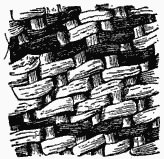 Fig. 12. Diagonal twined weaving. Ute Indians, Utah.
Fig. 12. Diagonal twined weaving. Ute Indians, Utah.
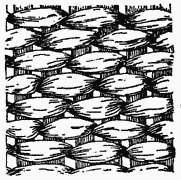 Fig.13. Diagonal twined basketry. Pomo Indians, California.
Fig.13. Diagonal twined basketry. Pomo Indians, California.
Pleasing varieties of this type of twined weaving will be found in the Aleutian Islands. It resembles hemstitching. The Aleuts frequently use, for their warp, stems of wild rye or other grasses, in which the straws are split, or a pair used, and the two halves pass upward in zigzag form. Each half of a warp is caught alternately with the other half of the same straw and with a half of the adjoining straw, making a series of triangular instead of rectangular spaces. (See Fig. 10.)
A still further variation is given to plain twined ware by crossing the warps. In bamboo basketry of eastern Asia these crossed warps are also interlaced or held together by a horizontal strip of bamboo passing in and out in ordinary weaving. In such examples the interstices are triangular, but in the twined example here described the weaving passes across between the points where the wraps intersect each other, leaving hexagonal interstices. (See Fig. 11.) This combination of plain twined weft and crossed warp has not a wide distribution in America, but examples are to be seen in southeastern Alaska and among relics found in Peruvian graves.
2. Diagonal twined weaving.—In diagonal twined weaving the twisting of the weft filaments is precisely the same as in plain twined weaving. The difference of the texture is caused by the manner in which the weft crosses the warps. This style abounds among the Ute Indians and the Apache, who dip the bottles made in this fashion into pitch and thus produce a water-tight vessel, the open meshes receiving the pitch more freely. The technic of the diagonal weaving consists in passing over two or more warp elements at each turn, just as in weaving with a single element. But the warp of the diagonal twined weaving never passes over or under more than one weft as it does in twilled weaving. There must
be an odd number of warps, for in the next round the same pairs are not included in the half turns. The ridges on the outside therefore, are not vertical as in plain weaving, but pass diagonally over the surface, hence the name. (See Figs. 12 and 13.) . . .
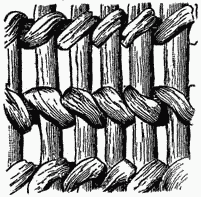 Fig. 14. Wrapped twined weaving.
Fig. 14. Wrapped twined weaving.
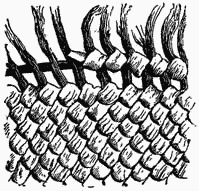 Fig. 15. Wrapped twined weaving. Makah Indians, Washington.
Fig. 15. Wrapped twined weaving. Makah Indians, Washington.
3. Wrapped twined weaving.—In wrapped twined weaving one element of the twine passes along horizontally across the warp stems, usually on the inside of the basket, forming a lattice. The binding element of splint, or strip or bark, or string, is wrapped around the crossings of the horizontal element with the vertical warp. (See Fig. 14.)
On the outside of the basket the turns of the wrapping are oblique; on the inside they are vertical. It will be seen on examining this figure that one row inclines to the right, the one above it to the left, and so on alternately. This was occasioned by the weaver’s passing from side to side of the square carrying basket, and not all the way round as usual. The work is similar to that in an old-fashioned bird cage, where the
upright and horizontal wires are held in place by a wrapping of finer soft wire. The typical example of this wrapped or bird-cage twine is to be seen among the Makah Indians of the Wakashan family living about Neah Bay, Washington, and in the soft hats of Salish and Shahaptian. (See Fig. 15.)
In this type the warp and the horizontal strip behind the warp are both in soft material. The wrapping is done with a tough straw-colored grass. When the weaving is beaten home tight the surface is not unlike that of a fine tiled roof, the stitches overlying each other with perfect regularity. Such a simple style of fastening warp and weft together
would seem to have occurred to tribes of savages in many parts of the world. Strange to relate, however, excepting in Washington and the ocean side of Vancouver Island, the process is not known. The exception to this statement is to be found in a few sporadic cases where, perhaps, Nutka and Makah women had married into adjoining tribes. . . .
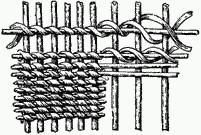 Fig. 16. Tee or lattice-twined weaving. Pomo Indians, California.
Fig. 16. Tee or lattice-twined weaving. Pomo Indians, California.
4. Lattice-twined weaving.—The lattice-twined weaving, so far as the collections of the National Museum show, is confined to the Pomo Indians, of the Kulanapan family, residing on Russian River, California. It is so called because it has a vertical and a horizontal warp resembling latticework. Dr. J. W. Hudson calls this technic tee. This is a short and convenient word, and may be used for a specific name. The tee-twined weaving consists of four elements, (a) the upright warp of rods, (b) a horizontal warp crossing these at right angles, and (c, d) a regular plain-twined weaving of two elements, holding the warps firmly together. (See Fig. 16.)
In all these examples in the National Museum the horizontal or extra warp is on the exterior of the basket. On the outside the tee basket does not resemble the ordinary twined work but on the inside it is indistinguishable. Baskets made in this fashion are very rigid and strong, and frequently the hoppers of mills for grinding acorns, and also water-tight jars, are thus constructed. The ornamentation is confined to narrow bands, the artist being restricted by the technic. . . .
5. Three-strand twined weaving.—Three-strand twined weaving is the use of three weft splints and other kinds of weft elements instead of two,
and there are four ways of administering the weft:
(a) Three-strand twine.
(b) Three-strand braid.
(c) Three-strand, false embroidery, Tlinkit.
(d) Wrapped twine, Thompson River.
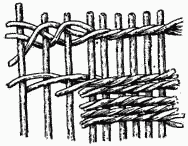 Fig. 17. Three-strand braid and twined work. (Outside.)
Fig. 17. Three-strand braid and twined work. (Outside.)
 Fig. 18. Three-strand braid and twined work. (Inside.)
Fig. 18. Three-strand braid and twined work. (Inside.)
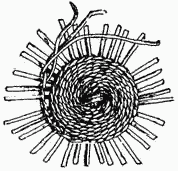 Fig. 19. Three-strand braid.
Fig. 19. Three-strand braid.
It will be seen in studying these four methods that they are partly structural and partly ornamental, especially the last two. Inasmuch, however, as the Indian woman makes her ornamental work a part of her industrial work, the four methods may be all studied here. Very little was known among the American aborigines concerning additional ornaments given to the textile after the foundation was woven. The part which furnishes strength to the fabric and that which gives decoration were in technic one and the same process.
(a) Three-strand twine.—In this technic the basket-weaver holds in her hand three weft elements of any of the kinds mentioned. In twisting these three, each one of the strands, as it passes inward, is carried behind the warp stem adjoining, so that in a whole revolution the three weft elements have in turn passed behind three warp elements. After that the process is repeated. By referring to the lower halves of Figs. 17 and 18, the outside and the inside of this technic will be made plain. On the outside there is the appearance of a three-strand string laid along the warp stems, while on the inside the texture looks like a plain twined weaving. The reason for this is apparent, since in every third revolution one element passes behind the warp and two remain in front. Three-strand twined work is seldom used over the entire surface of a basket. . . .
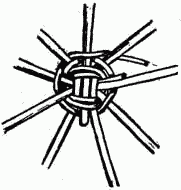 Fig. 20. Warp stems crossed in pairs.
Fig. 20. Warp stems crossed in pairs.
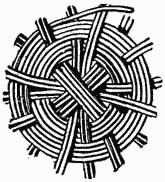 Fig. 21. Warp stems crossed in fours.
Fig. 21. Warp stems crossed in fours.
(b) Three-strand braid.—In three-strand braid the weft elements are held in the hand in the same fashion, but instead of being twined simply they are plaited or braided, and as each element passes under one and over the other of the remaining two elements, it is carried behind a warp stem. This process is better understood by examining the upper part of Fig. 19. On the surface, when the work is driven home, it is impossible to discriminate between three-strand twine and three-strand braid. The three-strand braid is found at the starting of all Pomo twined baskets, no matter how the rest is built up. . . .
Something should be said in this connection about the manner of laying the foundation for weaving baskets. In many of the specimens illustrated in this work it will be seen that very little tasteful care has been bestowed upon this part of the work. The Eskimos, for instance, do not know how, seemingly, but use a piece of rawhide, and it is said that the
Indians of British Columbia formerly inserted a piece of board or wood at the bottom of their coiled baskets and sewed the coils around an edge of it, but there is method in much of the basket weaving in this point, as will be seen on examining the plates. Miss Mary White, in her book, More Baskets and How to Make Them, has worked this subject out very carefully.2
Figs. 20 to 23, inclusive, show the result of her studies.
Fig. 20 is the simplest form of starting the bottom of a basket. Four warp stems are arranged in pairs and crossed at the center. A strip of wood or a flexible stem is wound twice around the intersection. The figure also shows how additional warp stems may be introduced into this pattern, being thrust between the regular stems. Once they are held
firmly in place by two or three rows of common basket weaving, additional warp stems are added, and they are bent out radially as a foundation for the work.
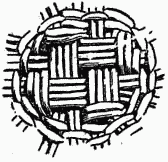 Fig. 22. Sixteen stems woven in fours.
Fig. 22. Sixteen stems woven in fours.
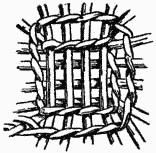 Fig. 23. Warp stems crossed in fours and twined.
Fig. 23. Warp stems crossed in fours and twined.
Fig. 21 shows how a start may be made with 16 warp stems crossing in groups of four at the center. Two sets begin at once to divide and radiate, and after they are held together by three rows of weft the other eight are spread out in the same way. The drawing illustrates exactly the manner in which this is done.
Fig. 22 shows another method of beginning with 16 warp stems, plaiting them into checker pattern at first, then afterwards spreading them out radially.
Fig. 23 brings us into the Hopi Indian type of twined weaving. Here four stems in one direction cross the same number at right angles and are held in place by a row of twined weaving, additional warp stems being inserted at the corners which spread out radially. . . .
COILED BASKETRY
Coiled basketry is produced by an over-and-over sewing with some kind of flexible material, each stitch interlocking with the one immediately underneath it. . . .
Coiled basketry in point of size presents the greatest extreme. There arc specimens delicately made that will pass through a lady’s finger ring, and others as large as a flour barrel; some specimens have stitching material one-half inch wide, as in the Pima granaries, and in others the root material is shredded so fine that nearly 100 stitches are made within an inch of space. In form the coiled ware may be perfectly flat, as in a table mat, or built up into the most exquisite jar shape. In design the upright stitches lend themselves to the greatest variety of intricate patterns.
Coiled basketry may be divided into ten varieties, based on structural characteristics.
The foundation of the coil may be (1) a single element, either splint, or stem, or rod; (2) a stem or other single element, with a thin welt laid on top of it; (3) two or more stems one over another; (4) two stems or other elements laid side by side, with or without a welt; (5) three stems in triangular position; (6) a bundle of splints or small stems; (7) a bundle of grass or small shreds.
The stitches pass around the foundation in progress (1) interlocking with and sometimes splitting stitches, but not inclosing the foundation underneath; (2) under one rod of the coil beneath, however many there may be; (3) under a welt of the coil beneath; (4) through splints or other foundation, in some cases systematically splitting the sewing material underneath. With these explanations it is possible to make the followingten varieties of coiled basketry, matting, or bagging:
A. Coilcd work without foundation.
B. Simple interlocking coils.
C. Single-rod foundation.
D. Two-rod foundation.
E. Rod and welt foundation.
F. Two-rod and splint foundation.
G. Three-rod foundation.
H. Splint foundation.
I. Grass-coil foundation.
K. Fuegian coiled basketry.
These will now be taken up systematically and illustrated. (See Fig. 24.)
A. Coiled work without foundation.—Specimens of this class have been already mentioned. The sewing material is babiche or fine rawhide thong in the cold north, or string of some sort farther south. In the Mackenzie Basin will be found the former, and in the tropical and sub-tropical areas
the latter. If a plain, spiral spring be coiled or hooked into one under neath, the simplest form of the open coiled work will result. An improvement of this is effected when the moving thread in passing upward after interlocking is twined one or more times about its standing part. (See Fig. 24A.) . . .
B. Simple interlocking coils.—Coiled work in which there may be any sort of foundation, but the stitches merely interlock without catching under the rods or splints or grass beneath. This form easily passes into
those in which the stitch takes one or more elements of the foundation, but in a thorough ethnological study small differences cannot be overlooked. (See Fig. 24B.) . . .
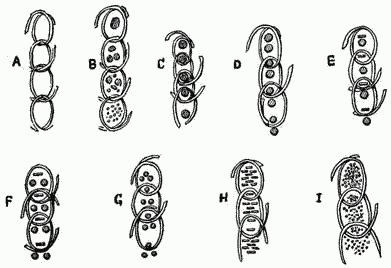 Fig. 24, A–I. Cross sections of varieties in coiled basketry.
Fig. 24, A–I. Cross sections of varieties in coiled basketry.
C. Single-rod foundation.—In rattan basketry and Pacific coast ware, called by Dr. J. W. Hudson tsai in the Pomo language, the foundation is a single stem, uniform in diameter. The stitch passes around the stem in progress and is caught under the one of the preceding coil, as in Fig. 24C. In a collection of Siamese basketry in the U. S. National Museum the specimens are all made after this fashion. The foundation is the stem of the plant in its natural state; the sewing is with splints of the same material, having the glistening surface outward. As this is somewhat unyielding it is difficult to crowd the stitches together, and so the foundation is visible between. California is not far behind the East in the
quality of material, willow for the basis of the coil, and plants in a variety of colors for the sewing. The Siamese coiled basketry has little of design on its surface, but the American basketmaker may fix whatever her imagination may suggest. The effect of the plain stitching is pleasing to the eye by reason of the regular broken surface. In America single-rod basketry is widely spread. Along the Pacific coast it is found in northern Alaska and as far south as the borders of Mexico. The Pomo Indians use it in some of their finest work. The roots of plants and soft stems of willow, rhus, and the like are used for the sewing, and being soaked thoroughly, can be crowded together so as to entirely conceal the foundation. (See Fig. 25.) . . .
 Fig. 25. Detail of single-rod coil in basketry.
Fig. 25. Detail of single-rod coil in basketry.
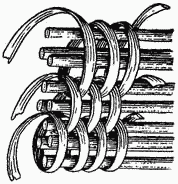 Fig. 26. Foundation of three rods, stitches catching rod underneath.
Fig. 26. Foundation of three rods, stitches catching rod underneath.
D. Two-rod foundation.—One rod in this style lies on top of the other; the stitches pass over two rods in progress and under the upper one of the pair below, so that each stitch incloses three stems in a vertical series. A little attention given to Fig. 24D will demonstrate that the alternate rod, or the upper rod, in each pair will be inclosed in two series of stitches, while the other or lower rod will pass along freely in the middle of one series of stitches and show on the outer side. . . .3
F. Two-rod and splint foundation.—In this style the foundation is made thicker and stronger by laying two rods side by side and a splint or welt on top to make the joint perfectly tight. The surface will be corrugated. Tribes practicing this style of coiling generally have fine material and some of the best ware is so made up. (See Fig. 24F.) . . .
G. Three-rod foundation.—This is the type of foundation called by Carl Purdy barn shi bu, from bam, sticks, and sibbu, three. Among the Pomo and other tribes in the western part of the United States the most delicate pieces of basketry are in this style. Dr. Hudson calls them "the jewels of coiled basketry." The surfaces are beautifully corrugated, and patterns of the most intricate character can be wrought on them. The technic is as follows: Three or four small willow stems of uniform thickness serve for the foundation, as shown in Fig. 26; also in cross section in Fig. 24G. The sewing, which may be in splints of willow, black oF white carex root, or cercis stem, passes around the three stems constituting
the coil, under the upper one of the bundle below, the stitches interlocking. In some examples this upper rod is replaced by a thin strip of material serving for a welt (see Fig. 24F). In the California area the materials for basketry are of the finest quality. The willow stems and carex root are susceptible of division into delicate filaments. Sewing done with these is most compact, and when the stitches are pressed closely together the foundation does not appear. On the surface of the barn shi bu basketry the Pomo weaver adds pretty bits of bird feathers and delicate pieces of shell. The basket represents the wealth of the maker, and the gift of one of these to a friend is considered to be the highest compliment. . . .
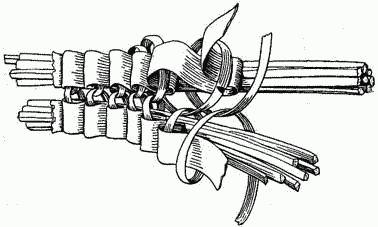 Fig. 27. Imbricated work detail, called Klikitat. Showing method of concealing coil stitches.
Fig. 27. Imbricated work detail, called Klikitat. Showing method of concealing coil stitches.
H. Splint foundation.—In basketry of this type the foundation consists of a number of longer or shorter splints massed together and sewed, the stitches passing under one or more of the splints in the coil beneath.
In the Pomo language it is called chilo, but it has no standing in that tribe. In the Great Interior Basin, where the pliant material of the California tribes is wanting, only the outer and younger portion of the stem will do for sewing. The interior parts in such examples are made up into the foundation. All such ware is crude, and the sewing frequently passes through instead of around the stitches below. In the Klikitat basketry the pieces of spruce or cedar root not used for sewing material are also worked into the foundation. (See Fig. 24H.)
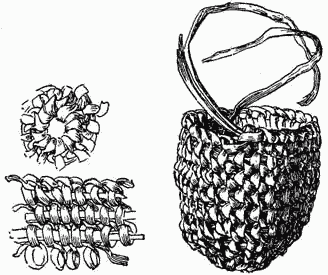 Fig. 28. Fuegian coiled basket, and details.
Fig. 28. Fuegian coiled basket, and details.
In a small area on Fraser River, in southwestern Canada, on the upper waters of the Columbia, and in many Salishan tribes of northwestern Washington, basketry, called imbricated, is made. The foundation, as said, is in cedar or spruce root, while the sewing is done with the outer and tough portion of the root; the stitches pass over the upper bundle of splints and are locked with those underneath. On the outside of these baskets is a form of technic, which also constitutes the ornamentation. It is not something added, or overlaid, or sewed on, but is a part of the texture effected in the progress of the manufacture. (See Fig. 27.)
The method of adding this ornamentation in strips of cherry bark, cedar bast, and grass stems, dyed with Oregon grape, is unique, and on this account I have applied the term "imbricated" to the style of weave here shown.
The strip of colored bark or grass is laid down and caught under a passing stitch; before another stitch is taken this one is bent forward to cover the last stitch, doubled on itself so as to be underneath the next stitch, and so with each one it is bent backward and forward so that the sewing is entirely concealed, forming a sort of "knifeplaiting." . . .
I. Grass-coil foundation.—The foundation is a bunch of grass or rush stems, or small midribs from palm leaves, or shredded yucca. The effect in all such ware is good, for the reason that the maker has perfect control of her material. Excellent examples of this kind are to be seen in the southwestern portions of the United States, among the Pueblos and Missions, and in northern Africa. The sewing may be done with split stems of hard wood, willow, thus, and the like, or, as in the case of the Mission baskets in southern California, of the stems of rushes (Juncus acutus) or stiff grass (Epicampes rigens). (See the cross section given in Fig. 241.) In the larger granary baskets of the Southwest a bundle of straws furnishes the foundation, while the sewing is done with broad strips of tough bark. . . .
K. Fuegian coiled basketry.—In this ware the foundation is slight, consisting of one or more rushes; the sewing is in buttonhole stitch or half hitches, with rush stems interlocking. The resemblance of this to Asiatic types on the Pacific is most striking. (See Fig. 28.)
1
2 How to Make Baskets, New York, 1902, also More Baskets and How to Make Them, 1903.
3 The rod and welt foundation, which is illustrated in figure 24E, but whose description is not included here, passes easily into forms C, D, and F.